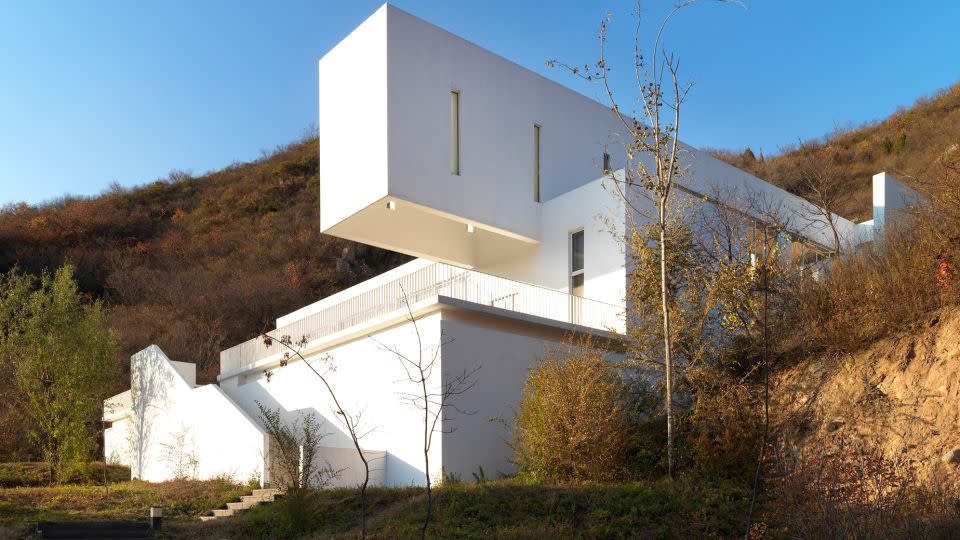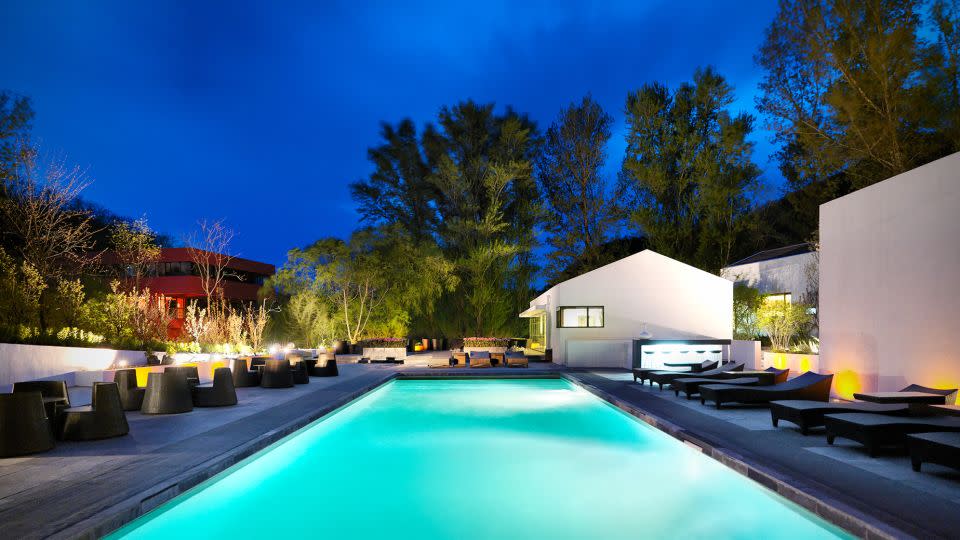A hotel with one-of-a-kind access to the Great Wall of China
Every day, thousands of tourists from around the world plan their bucket-list trips to the Great Wall of China.
Despite the wall’s 5,500-odd miles of terrain, stretching from east to west across the country, most travelers find themselves at either the Badaling or Mutianyu sections, the two areas closest to Beijing.
These visitors rise early from their downtown hotels, cram themselves into vans and wait in multi-hour queues to see the magnificent structures that comprise the Great Wall, navigating around groups of camera-toting tourists in hopes of snapping their own Instagram-worthy shot.
But what if there was another way?
An hour-long drive north of the jam-packed capital is Commune by the Great Wall, a popular weekend getaway for Beijingers where a series of modernist buildings comprise a luxury hotel, with award-winning design amid yellow-leaved gingko trees.
Beyond the usual amenities – an expansive breakfast buffet, cozy bed linens – Commune by the Great Wall provides a rare opportunity to simply walk to the Wall.
Just 20 minutes by foot from the hotel reception is the Shuiguan section of the wall.
Here, there are no long lines, no tour guides shouting into microphones and no sea of buses in the parking lot.
Tucked amid the mountains, the views from the highest turrets of the wall are breathtaking – and, even more importantly, unobstructed.

A hotel that’s its own destination
It isn’t only the bucolic surroundings that lure travelers to the town of Yangqing.
Commune by the Great Wall is an albergo diffuso, or diffused hotel, where guests stay in one of a collection of buildings rather than one central structure.
This can be confusing to a taxi driver or first-time visitor, as they seem to have driven from the Chinese countryside directly into a luxury neighborhood development.
However, there is one central building that serves as the reception area as well as being home to the hotel’s restaurants. Bellhops will drive guests from check-in to their accommodations in golf carts around the sprawling property.
The hotel was the brainchild of husband-and-wife developers Pan Shiyi and Zhang Xin, who previously co-founded the Chinese real estate firm Soho. Originally intended to be a group of upscale country houses for Beijing’s elite, the project evolved into a hotel.
Pan and Zhang hired a best-in-class crop of architects and designers to leave their mark in Yangqing. A dozen boldface names from around Asia were brought in to design one dwelling each: think of it as The Avengers, architecture edition.
The couple urged architects to use local materials and to make the villas blend in with the environment as much as possible.

Pritzker Prize winner Shigeru Ban designed “Furniture House,” where chairs and tables are integrated into the structure of the home, as his first ever project in China. The house was inspired by what Ban witnessed in his native Japan following an earthquake – often, heavy furniture survived intact while home foundations didn’t.
Hong Konger Gary Chang created the “suitcase house” inspired by the micro-flats in his native city. Someone walks into the dwelling, which looks like a plain wooden cabin with no furniture, only to pull up sections of the floor a la opening a suitcase and discover bedrooms, a bathroom, and living spaces neatly packed underneath.
And no less than Ai Weiwei – one of the most famous Chinese artists of his generation – served as the landscape designer.
Commune by the Great Wall won a special commendation at the Venice Architecture Biennale in 2002, the year the 12 core buildings were completed.
Additional structures have been added in the years since. Kengo Kuma’s iconic bamboo house has been copied over, so guests now need to specify whether they’re sleeping in Bamboo House 1, 2 or 3.
There are also communal buildings with single rooms for individual travelers who can’t afford to rent an entire villa.
Guests can ask to see any unoccupied building, with an English-speaking concierge available to give on-the-spot architecture tours.
Commune by the Great Wall became part of Hyatt’s Unbound Collection in 2021, so points loyalists have even more incentive to visit.
In 2024, upgrade and renovation work will begin on the original 12 buildings.
Some have simply suffered from the wear and tear of years’ worth of guests and their wheelie suitcases. Others experienced damage during the floods that ravaged the Beijing area in summer 2023 and are currently not habitable.
Commune by the Great Wall, The Great Wall Exit No.53, Yangqing, China, 102102; +86 10 81181888
For more CNN news and newsletters create an account at CNN.com

